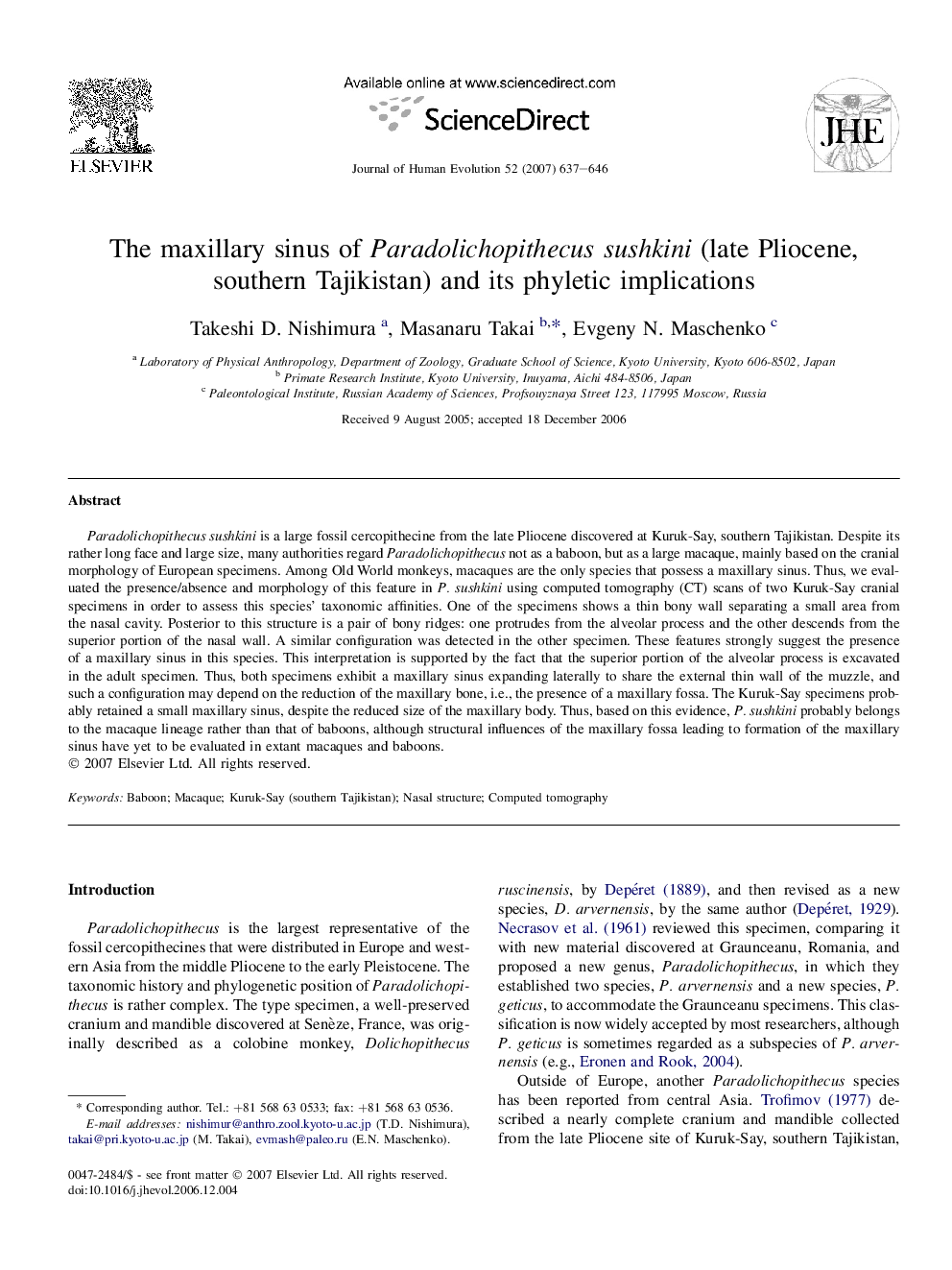| کد مقاله | کد نشریه | سال انتشار | مقاله انگلیسی | نسخه تمام متن |
|---|---|---|---|---|
| 4557372 | 1329552 | 2007 | 10 صفحه PDF | دانلود رایگان |
عنوان انگلیسی مقاله ISI
The maxillary sinus of Paradolichopithecus sushkini (late Pliocene, southern Tajikistan) and its phyletic implications
دانلود مقاله + سفارش ترجمه
دانلود مقاله ISI انگلیسی
رایگان برای ایرانیان
کلمات کلیدی
موضوعات مرتبط
علوم زیستی و بیوفناوری
علوم کشاورزی و بیولوژیک
بوم شناسی، تکامل، رفتار و سامانه شناسی
پیش نمایش صفحه اول مقاله

چکیده انگلیسی
Paradolichopithecus sushkini is a large fossil cercopithecine from the late Pliocene discovered at Kuruk-Say, southern Tajikistan. Despite its rather long face and large size, many authorities regard Paradolichopithecus not as a baboon, but as a large macaque, mainly based on the cranial morphology of European specimens. Among Old World monkeys, macaques are the only species that possess a maxillary sinus. Thus, we evaluated the presence/absence and morphology of this feature in P. sushkini using computed tomography (CT) scans of two Kuruk-Say cranial specimens in order to assess this species' taxonomic affinities. One of the specimens shows a thin bony wall separating a small area from the nasal cavity. Posterior to this structure is a pair of bony ridges: one protrudes from the alveolar process and the other descends from the superior portion of the nasal wall. A similar configuration was detected in the other specimen. These features strongly suggest the presence of a maxillary sinus in this species. This interpretation is supported by the fact that the superior portion of the alveolar process is excavated in the adult specimen. Thus, both specimens exhibit a maxillary sinus expanding laterally to share the external thin wall of the muzzle, and such a configuration may depend on the reduction of the maxillary bone, i.e., the presence of a maxillary fossa. The Kuruk-Say specimens probably retained a small maxillary sinus, despite the reduced size of the maxillary body. Thus, based on this evidence, P. sushkini probably belongs to the macaque lineage rather than that of baboons, although structural influences of the maxillary fossa leading to formation of the maxillary sinus have yet to be evaluated in extant macaques and baboons.
ناشر
Database: Elsevier - ScienceDirect (ساینس دایرکت)
Journal: Journal of Human Evolution - Volume 52, Issue 6, June 2007, Pages 637-646
Journal: Journal of Human Evolution - Volume 52, Issue 6, June 2007, Pages 637-646
نویسندگان
Takeshi D. Nishimura, Masanaru Takai, Evgeny N. Maschenko,